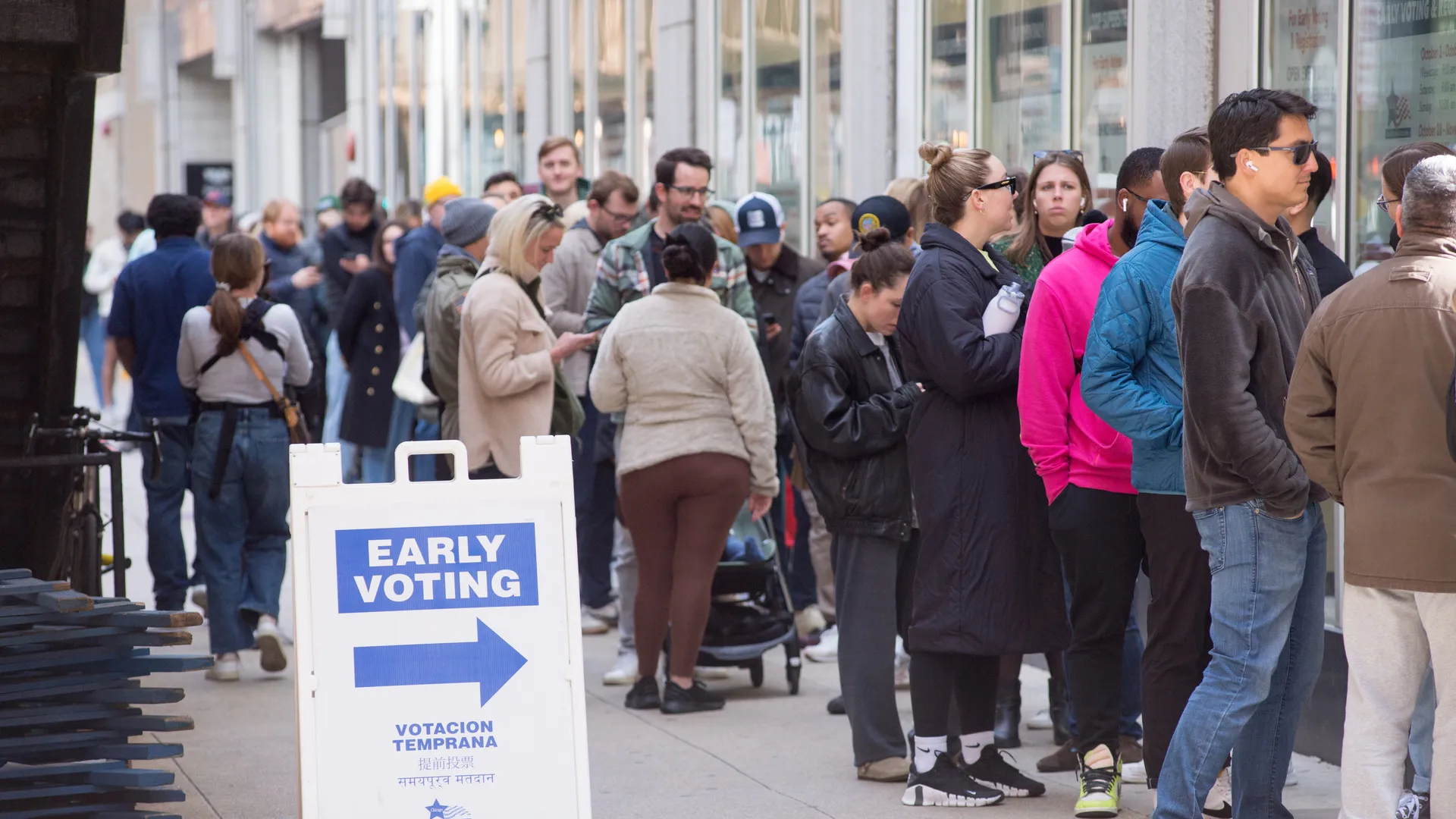November 4, 2024
Early voting has officially begun across the United States, with millions of Americans now casting ballots ahead of Election Day. Voters in many states can choose between voting in person at designated early voting sites or by submitting their ballots through the mail. In an effort to secure votes well before Election Day, both parties are rallying their supporters to participate in early voting, albeit with varying strategies and messaging.
A Push for Early Voting Among Democrats
The campaign for Vice President Kamala Harris has been actively promoting early voting, encouraging Democratic supporters to cast their ballots early. This approach is seen as a way to “bank votes” ahead of Election Day, potentially alleviating the burden on voting sites during the final hours of the election and solidifying support early in the process. Harris has personally emphasized the importance of early voting in campaign appearances and social media, stressing that casting a ballot early allows supporters to avoid last-minute obstacles and ensure their voices are counted.
“Every vote matters, and every voice should be heard,” Harris said at a recent rally. “Early voting is one of the ways we can make sure our message is loud and clear.”
Republican Efforts to Encourage Early Voting
While former President Donald Trump has often criticized early voting in the past, his current campaign has embraced it. Recognizing that early voting could be a valuable tool in securing votes and mobilizing the Republican base, Trump and the Republican Party have launched a targeted campaign to get GOP supporters to cast ballots before Election Day. In an unusual move, Republican National Committee officials and campaign representatives have used social media and advertisements to encourage Republicans to make use of early voting options.
Trump addressed the shift in his stance on early voting during a recent interview, acknowledging that the GOP could benefit from participating in early voting. “It’s not about the process—it’s about making sure our supporters get out and vote,” Trump said. “If early voting helps us achieve that, then we should be all in.”
State-By-State Breakdown of Early Voting
In many states, early voting information is publicly available, providing insight into which demographics are engaging in early voting, their age, and the method by which they are casting ballots. In states like Florida, North Carolina, and Georgia, election officials report statistics that often include breakdowns of the number of early voters by party affiliation, gender, and age group, giving both parties an inside look at early voting trends. This data helps campaigns adapt their strategies by identifying which groups may need additional mobilization to reach or exceed projected turnout.
According to a recent report from the United States Elections Project, states like Texas, California, and Pennsylvania have seen a surge in early voting participation, especially among younger voters and urban populations. The data from these states indicate a strong early voter turnout across party lines, suggesting that both Democratic and Republican efforts to promote early voting are making an impact.
Key States to Watch
Several battleground states will be closely monitored during this early voting period. Georgia, Arizona, Pennsylvania, and Michigan—states that were pivotal in the 2020 election—have already seen heavy early voting turnout, with more expected as Election Day approaches. Early voting statistics from these states could be a bellwether for overall voter sentiment, as they reveal how energized each party’s base is and which issues might be driving early participation.
In Pennsylvania, for example, more Democrats have reportedly voted early by mail, while Republicans show stronger turnout in in-person early voting. Meanwhile, Georgia officials have noted a nearly even split between party affiliations among early voters, adding suspense to an already closely watched contest.
The Debate Over Early Voting
While early voting has clear advantages, including reducing long lines and providing more flexibility for voters, it has also faced criticism. Some argue that voting weeks before Election Day means some voters may miss out on late-breaking developments that could influence their choices. However, advocates for early voting emphasize that it provides necessary accessibility and is particularly valuable for those who may face obstacles on Election Day, such as work obligations or lack of transportation.
In addition to improving access, early voting is seen by many election officials as a way to distribute resources and manage voter turnout more effectively, potentially reducing the risk of long wait times and technical issues on Election Day.
Looking Forward
With early voting underway, the focus of each campaign will now be on ensuring their supporters follow through. As data from early voting continues to roll in, campaign staffers on both sides are likely to adapt their strategies, targeting those who have yet to cast ballots and encouraging them to vote before November 5.
For voters, this year’s early voting period offers a reminder of the critical role that each individual can play in shaping the outcome of the election. As both parties push to secure votes, early voting is proving to be more than just a convenience—it’s a strategic battlefield in one of the most closely contested elections in recent history.
Sources:
- The Washington Post: “Kamala Harris Urges Early Voting as Democrats Focus on Securing Ballots Early,” October 27, 2024.
- New York Times: “Trump Campaign Promotes Early Voting Despite Previous Criticism,” October 26, 2024.
- United States Elections Project: “Early Voting Statistics by State,” October 2024.
- USA Today: “Both Parties Ramp Up Early Voting Efforts Ahead of Election Day,” October 28, 2024.

